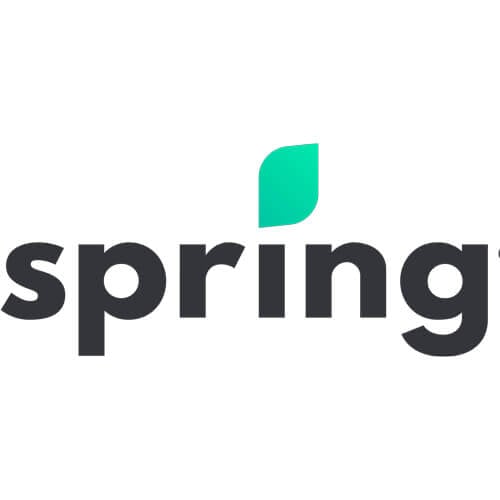Student loans: How do I apply for OSAP?
If you’re looking to apply for OSAP, make it easier on yourself by being prepared with these tips.
Advertisement
If you’re looking to apply for OSAP, make it easier on yourself by being prepared with these tips.

Thinking about applying for OSAP? You’ve come to the right place. Also known as the Ontario Student Assistance Program, this student financial aid program may help you out with post-secondary costs.
In under 60 seconds, get matched with a personalized list of loan providers based on your needs and approval likelihood. No SIN required.
With college and university tuition fees rising faster than inflation in recent years, it’s wise to research student loans, like OSAP. Many students and parents struggle to pay these costs upfront. Tuition for undergraduate programs vary, but the average tuition was $6,580 for the 2020/2021 academic year, according to Statistics Canada. Add on school materials and commuting costs (don’t forget laundry, food and so on), AND you could be looking at spending upwards of $30,000 for a four-year program, possibly doubling or nearly tripling that number if you move move into residence or off-campus housing.
Here’s what students and parents need to know about applying for OSAP, how much financial aid you might get, and how to make sure you are eligible for the student loan.

Apply for a personal loan with a 8.99% to 29.49% APR. Plus, 100% online application and no early repayment fees.

Apply for a personal loan with a 9.99% to 34.95% APR. Plus, fast e-transfers and no hit to your credit score when you apply.

Pre-qualify instantly to borrow up to $35,000, with rates from 8.99%
While the Government of Canada does offer financial aid for students in need, OSAP works in conjunction with the federal loans and grants programs. (Also check out our guide on applying for federal loans and grants.) For example, in 2018/2019, OSAP supported approximately 450,000 students with an additional $2.1 billion in loans and grants.
OSAP is open to permanent residents of Ontario who are taking an OSAP-approved program at an approved school for at least 12 weeks. That’s not to say you have to stay in Ontario. The loan may provide students with money to attend post-secondary school anywhere in the world, as long as it’s approved and the student meets the eligibility requirements.
It all depends on your financial need. The amount of money you may receive depends upon your school expenses, including tuition, student fees, living expenses and so on, as well as your financial resources, such as personal income, family income, scholarships and bursaries. To make the calculation simple, think of it this way:
Educational Costs – Financial Contribution = Financial Need
Other factors come into play, like course load, level of study, where your school is located, your relationship status and if you have dependants. The more you need financial assistance to pay for school, the greater the likelihood you will receive more money, which can come in the form of grants (which you don’t need to repay) or loans (which you do need to repay).
To calculate your financial need, consider OSAP’s Aid Estimator tool to predict how much money you may need, and whether you may qualify for an OSAP loan. You simply enter the program you plan to attend, along with a few basic questions about your family relationships, if you have a disability, and so on. Providing these answers will give you a breakdown of how much funding in both grants and loans you may be eligible for.
OSAP offers financial support with loans and grants. You have to re-apply every academic year, but it’s worth the effort, as you will automatically be considered for loans as well as grants.
A loan uses public funds that the borrower will need to begin paying back six months after graduation, or the last semester completed. Typically, that interest starts immediately when you stop going to school, despite the six-month grace period for payments. However, as part of the government’s response for pandemic relief, no interest is being charged for the first six months, until new updates.
A grant is also publicly-funded money, but you don’t have to worry about paying back after graduation or when you stop going to school.
Unfortunately, there are maximum amount limits of aid for those who receive OSAP. The maximum amount a single student with no dependents enrolled in a full-time program at a public college in university in Canada may receive is $545 per week. Full-time students may also be eligible for additional funding, such as grants, which could provide a maximum of $9,000 per academic year, while part-time students and receive up to $3,600 per academic year. Students with disabilities may receive an additional maximum of $4,000 per academic year. And students with dependents may receive an additional maximum of $400 per child each month.
You can apply for OSAP online. It’s free to fill out an online application, and the process takes roughly 15 minutes to complete. You have to register for an account and provide information about your studies, your income and your family’s income (unless you’re considered an independent student).
When you create an OSAP account, you are required to input information about your current financial and personal situation, as well as your studies. Prepare for the application process by gathering the items listed below:
You will use the same account to apply for OSAP in subsequent academic years, and you can use it to check your loan and grant status too. So be sure to write down or save OSAP Access Number and password.
The deadline to apply for a full-time OSAP application is no later than 60 days before the end of your study period. Tuition payment deadlines are generally towards the end of the first month of your semester, so it’s a good idea to look at the academic calendar for your school well in advance.
You may receive money after your application has been reviewed, confirmed and approved. The application process can take four to six weeks, so apply as early as you can. OSAP money is automatically sent to your school and will pay a portion of your account balance, or the full balance if you’re eligible for enough funding. Any remaining funding will be deposited directly into your bank account by the National Student Loans Service Centre (NSLSC). The NSLSC is where you can view your funding, make payments and see how much you owe on your current student loans.
You will receive OSAP funding in two installments. If you’ve applied for OSAP early and your application has been approved before classes start, you can expect to receive 60% of your funding at the start of the fall semester, and the remaining 40% will be issued at the start of the winter semester.
You make monthly payments on your OSAP loan, which will include interest charges that are added to your loan balance. It’s best to pay them off as soon as possible, since this will reduce the interest accumulating on your loan and allow you to get out of debt quicker.
To figure out how much you owe for your OSAP loan, you need to figure out these three things.
To get a better idea of what your loan payments will look like when the time comes, you can use the OSAP Repayment Calculator. You simply input the amount you owe, the number of months in which you would like to pay off your loan and the interest rate.
For loans from the Ontario government:
For Canada Student Loans (CSL), you have two options when you begin to pay back your loans:
The prime rate is the annual interest rate used by banks and other financial institutions to lend money to the top-qualifying individuals and businesses. This rate is influenced the prime interest rates of the five largest Canadian banks, and is subject to change as these rates vary. currently 5.95% Know that interest rates applied to student loans are much lower than the interest rates on credit cards or bank loans.
Here are some tips that can help you manage your student aid and your costs while you’re in school.
The most important thing to remember about OSAP is to apply for it as early as you can. It will take a lot of stress off your plate, so you can enjoy your time in school. It can go by in a flash.
• Canada’s best student credit cards
• Financial aid guide for university and college students in Canada
• Financial help for students and recent grads affected by COVID-19
• Are the costs of owning a car worth it for students?
Share this article Share on Facebook Share on Twitter Share on Linkedin Share on Reddit Share on Email
Hello,
My son, 45, has been out of university for about 25 years, and never completed his schooling.
He has outstanding OSAP loans from his teens, and has been on ODSP for years. He does not file income tax for fear of being made to pay back the loan with his limited income. Can the loan be forgiven under the circumstances? How would we find out?
Due to the large volume of comments we receive, we regret that we are unable to respond directly to each one. We invite you to email your question to [email protected], where it will be considered for a future response by one of our expert columnists. For personal advice, we suggest consulting with your financial institution or a qualified advisor.